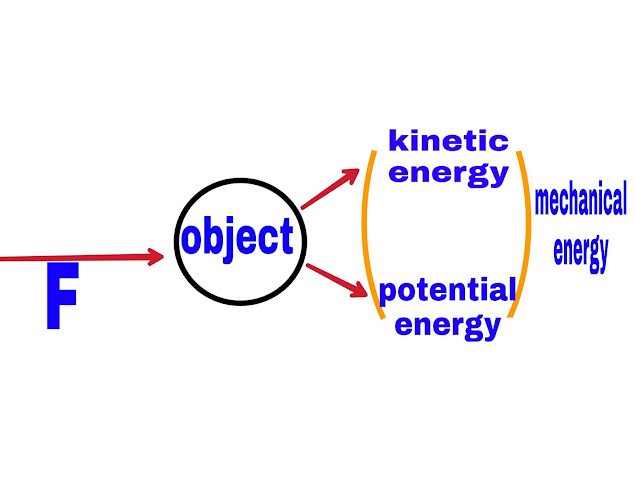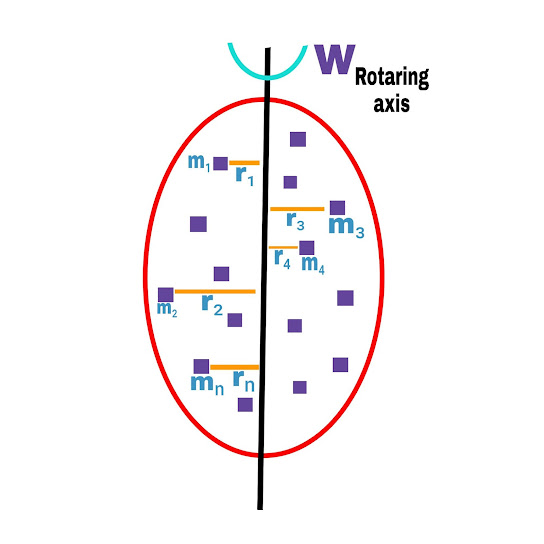Physical world
The correct concept of force is given by Newton’s laws of motion. We experience many forces in the micro world as well as in the macro world.
Gravitational force and electromagnetic force are experienced in the physical world.
Because the range of both of them is infinite.
Whereas in the microscopic world, nuclear forces, electric and magnetic forces and weak nuclear force are experienced in radioactive shadows.
The fundamental forces in nature are :
1. Gravitational force
2. Electromagnetic force
3. Strong nuclear force
4. Weak nuclear force
Gravitational force
It always arises in nature between two bodies due to their masses.It is always the force of attraction.
According to this force,
“The gravitational force between any two objects is proportional to the product of the masses of the two objects and inversely proportional to the square of the distance between them.”
Suppose two objects whose masses are m1 and m2 respectively and the distance between them is r.
Hence the gravitational force between them,

F∝m₁.m₂_____(1)
F∝1/r²______(2)
From equation (1) and (2)
F∝m₁.m₂/r²
F=G.m₁m₂/r²
Where G is a constant. Which is called universal gravitational constant.
And its value,
It is 6.67×10⁻¹¹ N.M²/Kg².
Therefore, gravitational force is also called universal force.
Electro Magnetic Force
It is a force acting between charged particles. If the charges are at rest at a certain distance, the force acting between them is called electrostatic force. Which was studied by Coulomb.
Hence it is also called Coulomb force.
According to this force,
The Coulomb force between any two stationary charges is proportional to the product of the two charges and inversely proportional to the square of the distance between them.
By combining equations (1) and (2)
F∝q₁.q₂/r²
F=K.q₁.q₂/r²
Where K is a constant.
It’s value,1/4π€o=9×10⁹ N.M²/C²
Where €o is dielectric constant of vacuum.
It’s value,
8.86×10⁻¹² Kg²/NM²
The value of K depends on the permittivity of the medium.
When a charge is moving, a magnetic force also acts on it. Generally electric and magnetic fields cannot be separated. Because a changing magnetic field generates the electric field.
Therefore, the electric and magnetic fields which cannot be separated are jointly called electromagnetic fields and the forces arising from these fields are called electromagnetic forces.
Strong Nuclear Force
The force required to bind the nucleons of the nucleus is called strong nuclear force. This force does not depend on charge.
This force arises between neutron-neutron, proton-proton, proton-neutron.
In modern discoveries, strong nuclear force also arises between quart-quart because protons and neutrons are made up of microscopic particles like quart.
Properties of strong nuclear force
It is the strongest force in nature. The strong nuclear force is 100 times stronger than the electromagnetic forces.
This force does not depend on charge.
This force is a force with short range (10⁻¹⁵m). It is affected only within the nucleus.
Weak Nuclear Force
In some nuclear events like β_decay of radioactive nucleus, the force acting between the elementary particles is called weak nuclear force.
Note- β is a radioactive nucleus, emitting one electron and one antineutron.
The weak nuclear force is also a force with a weak range (10⁻¹⁶m) and it is stronger than the force of gravity. All fundamental forces are derived from the exchange of a particular characteristic particle.
Gravitational force – arises from the exchange of gravitons.
Electromagnetic force – obtained from exchange of photons.
Strong nuclear force – obtained from the exchange of mesons between nucleons.
Weak nuclear force – obtained from Bosan exchange.
Nature of physical laws
In different physical time processes, some physical quantities change with time, some physical quantities remain constant with time, these are the quantities which remain constant. They are called conserved quantities and they follow the conservation laws of physics and physical processes are controlled by different types of forces.
Some conservation rules are as follows :
Conservation of energy
Conservation of linear momentum
Conservation of angular momentum
Mass energy conservation
Conservation of charge
Conservation of energy
If the force acting on an object is conservative, then the sum of the total mechanical energy (kinetic energy and potential energy) of the system remains constant. This is the law of conservation of the mechanical energy.

If the force is not conservative then the total energy of the universe remains constant. This is the general law of conservation of energy and this law is true for all forces and all types of energy transformations.
Conservation of linear momentum

If the external force on a system is zero then the total linear momentum of the system is conserved. This is the law of linear momentum conservation.
m₁v₁+m₂v₂+m₃v₃________+mₙvₙ= constant
Conservation of angular momentum
In the absence of torque, the total angular momentum of a body remains constant. This is known as law of angular momentum.

If,
Torque τ=0J₁+J₂+J₃_____+Jnₙ=fixed
m₁v₁r₁+m₂v₂r₂+______+mₙvₙrₙ=constant
Angular momentum- The moment of linear momentum is know as angular momentum
Mass-Energy conservation
According to Einstein,
Mass and energy are not separate physical quantities but are two forms of the same quantity.
The Mass can be converted into energy and energy can be converted into the mass.
Equivalent relation between mass and energy
E=mc²
where c is the speed of light
c=3×10⁸ m/sec
Example—
In a nuclear reaction, the total number of nuclei remains constant, whereas the total mass of the nuclei reacting in the process does not remain constant before and after the reaction but varies. This difference is called mass loss. And this mass loss appears as energy.
Conservation of charge
The total charge of an isolated system is conserved. Apart from these rules, some other conservation rules also apply in microscopic bodies like nuclear reactions.
Example—
1. Pair production
2. Pair destruction
Purpose and stimulation of physical
Physics is basically divided into two parts :
1. Gross
2. Micro
The macro effect of physics includes phenomena at earth and astronomical level. Whereas micro physics includes atomic, molecular and nuclear phenomena. The principles of classical mechanics are used to explain macroscopic phenomena.
Under the micro and macro influence of physical
Events related to atoms and nuclei are explained. Modern quantum mechanics is used to study it. Along with this, the composition and structure of matter and the interactions between particles etc. are studied.
Thus, physics is a macro and micro science and is the basis of all branches of science, that is, in physics, the phenomena of the non-living world are studied, which are beneficial for living beings.
Branches of Classical Mechanics
1. Mechanical
In this, the laws of solid, liquid and gas are studied. It is based on Newton’s laws of motion and the law of gravity. In this branch, physical quantities like mass, inertia, force, energy, power etc. are explained.
2. Thermodynamics
In this branch of physics, the change in mechanical energy, temperature and energy etc. of the system due to the change and transfer of heat as a function of work is studied.
3. Optics
In this branch of physics, phenomena based on light like reflection, refraction, diffraction, diffraction as well as the working method of telescope and microscope are described.
4. Oscillations and waves
There are three types of oscillations
1. Free
2. Damped
3. Forced
In this branch of physics, vibrations of various objects and the work of waves generated by the vibrating object are studied. This is how we come to know how our voice progresses.
5. Electrodynamics
In the branch of electrical science, the phenomena of electromagnetic waves are explained. Along with this, transmission of radio waves in the magnetic ionosphere of a serial conductor etc. is studied.
